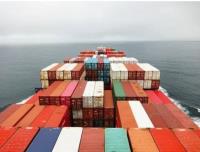 Add My Company
Add My Company
Sign In

What Damage Can Moisture Cause Inside a Container?
Moisture damage is one of the biggest causes of concern when cargo is being stored or shipped around the world.
Moisture, including humidity and condensation, can lead to damaged containers, contaminated goods and unhappy customers. However with the help of moisture protection packaging, desiccants and a few handy storage tips, you can minimise the chance of moisture affecting containers.
In this article, we explain what damage moisture can cause inside a container, and how you can protect your goods from harm.
How Does Moisture Cause Damage?
Moisture can be a serious problem when goods are in storage or transit. The longer shipping containers are in storage, the more chance there is for moisture to cause damage.
Moisture in shipping containers can be caused by a number of factors, all of which can lead to damaged containers and goods. Moisture damage can stem from high levels of humidity, bad weather conditions, floods, leaks, damaged containers, lack of ventilation and rapid changes in temperature that lead to condensation. A lack of moisture protection packaging or packaging that’s adequately sealed or waterproofed can also lead to moisture damage.
The moisture can then cause damage to the shipping container and, if it gets inside, the cargo held within. Moisture can cause metals to rust, labels to peel and packaging to break down. It can foul food and drink, and dilute or contaminate fuel, oil and lubricants.
How Do You Absorb Moisture in a Container?
There are a number of effective ways to protect shipping containers from moisture damage. This includes ventilating storage areas, regularly checking containers for damage, and ensuring containers are protected from leaks and bad weather conditions.
The most effective way to protect containers from moisture is to remove the source of moisture or absorb the moisture before it becomes damaging. In this respect, using a dehumidifier in storage or transport areas can help to remove the moisture. However inside the shipping containers, it’s best to use desiccants.
Desiccants include simple silica gels or more effective Absorpole or AbsorGel products, which can absorb any moisture that gets inside a container.
Who Is Responsible for Shipping Container Damage?
If shipping containers or the goods inside them are damaged, it’s important to understand who is responsible for this.
In the first instance, the distributor who packs goods is responsible for ensuring that they are packed correctly and that any chance of moisture damage at this stage has been minimised.
When goods are in transit or storage, the responsibility often falls on the cargo or storage company. This is the case if shipping containers are incorrectly stowed or if they are damaged while in transit.
Contact ITP Packaging for More Information on Protecting Containers From Moisture Damage
Protecting your shipping containers from moisture is imperative, and we recommend using moisture protection packaging and desiccants to avoid damaging cargo.
ITP Packaging stocks a comprehensive range of protective packing and desiccants, including high-quality products such as Absorpole and AbsorGel.
Contact our friendly staff today to find out which desiccants are best suited for your business.
For more information on What Damage Can Moisture Cause Inside a Container? talk to ITP Packaging Ltd
Enquire Now
List your company on FindTheNeedle.

